
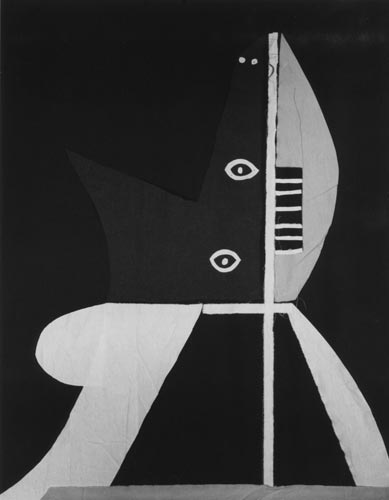

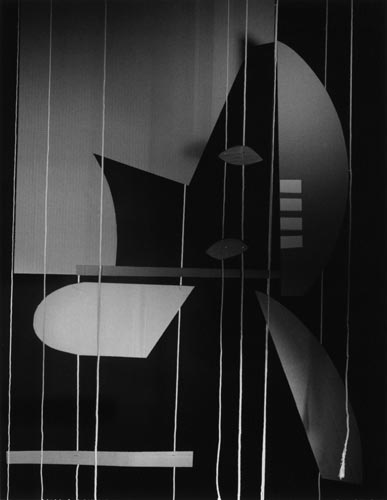
One of the most interesting young artists with whom I had contact as their teacher is Remigiusz Biernacki whose works bear the mark of an independent and inventive author. I merely guided him as a teacher - and observed his evolution as an artist with respect. Remigiusz Biernacki is an artist who has found his own place in photography - and his earlier education is not without meaning here, as he studied architecture at the Polytechnic in Gdańsk where he became acquainted with painting, drawing and sculpture. In my opinion his art is clearly influenced by those three branches of fine arts. The inspiration behind some of his photographs, presented at the current exhibition, is painting, for example Picasso or The Last Supper by Leonardo da Vinci. But his photographs seem inspired not only by plastic arts. His inspiration is also music. Biernacki often begins by sketching his ideas which is undoubtedly a very effective method in the initial stages of working on a photograph. A sketch is thus the first notation of an idea. Very few photographers work in this way but it is during the drawing of the sketch that the concept of space of the photographic location and first reflections on the shape and form of forthcoming photographic sets are born.
Everyone of us gains and carries in them a more or less individual vision of the world. The richness of this vision depends on our imagination. Without it this vision would be shapeless and without perspective; we would see only separate images of things without the context of their background, distance and surroundings. Artists such as sculptors and architects, as well as some photographers and cinematographers who do not have exceptional spatial imagination would never achieve original results. Thinking in terms of space in photography is absolutely necessary and inseparable from the creative process during the construction of the set. And Biernacki's works are characterized by his rich spatial imagination which is a rare bird among young photographers these days - and it is his spatial imagination that seems to me to be the source of his artistic individuality. Biernacki's way of thinking and his use of space as artistic material resemble the art of Sandy Skoglund, photographic installations of Sandra Stark and games with perspective played by Zeke Berman. As in the case of those artists, spatial objects constructed by Biernacki are products of his imagination but by placing them on a photographic set Biernacki makes them real. Both Biernacki's imagination and his photographs exist in space and feed on it.
At the current exhibition at the FF Gallery Remigiusz Biernacki presents a few photographic series. The source of almost all of them is the author's fascination with some conrete artwork. The series entitled Picasso has been inspired by paintings and drawings by Picasso from his cubist period. The transformation of space in Biernacki's staged photographs goes beyond the space characteristic for cubism in which Picasso rejected the classical form of perspective in order to conduct an analysis and show the given object in its stereometric structure. Photography - which is an obvious example of converging perspective - when contrasted with the cubist space of Picasso's paintings produces in Biernacki's works a very interesting relation between what was transformed in Picasso's imagination and the reality of the photographic set, not to mention the illusion of perspective in photography. Biernacki does not try to hide any elements of montage and does not conceal strings, raw surfaces of cardboard planes or artificial light in the study. This causes a strange juxtaposition of two realities - one of a conceptual or simply abstract space, calculated mathematically, and the other of real space, existing within an artificially constructed photographic object which is later shown in an illusory fashion typical for photography. It seems that photography is unable to eneter into dialogue with abstract images precisely because of the mechanical impudence of the medium. However, it turns out, for example in Biernacki's photographs, that it is also extraordinarily submissive to all transformations which allow us to carry the photographed construction into imaginary artistic space.
In the next series called Figures Biernacki uses a similar method in building his sets as in the Picasso series. But it is the only similarity here, as the inspiration for Figures was The Last Supper by Leonardo da Vinci. Here Biernacki does not use pastiche as in Picasso. The inspiration behind The Last Supper has given rise to a study of figures of apostles whom the author presents on separate photographs. Biernacki constructs human figures from paper and hangs them on strings like marionettes. Paper figures are entangled in those strings and immobilized in expressive motion, as if in a gesture of powerless participation in a tragic finale. The drama is intensified by a black, limitless background-abyss in which the author has placed his characters. The series consists of seven photographs and is unfinished. I would advise the author to complete the series, i.e. to produce thirteen photographs.
The series entitled Requiem, from 2007, is inspired by Mozart's mourning mass, a work surrounded by legend and mystery. I must admit that one has to have a lot of courage in order to enter into discourse with such a great musical piece and such a serious matter as death. It is said that death is a difficult subject that we generally try not to talk about. But Biernacki is not interested in literal illustrations or so-called visualisations of musical works. The artist uses Requiem in order to build spatial objects which are very rich in meanings and symbols. This series radiates powerlessness, mystery and horror and is intensified by a mask-screen which covers the image-photograph, obliterates the reality of photographed objects, distances the images and causes the feeling of uncertainty in the viewers. The hanging elements which resemble stairs, ladders, empty window-frames or see-saws in motion have hidden symbolic and unconscious associations. The atmosphere of the fleeting moment and the fragility of life in those photographs by Biernacki corresponds to our eschatological feelings.
The idea that gave rise to the series called Siesta came to him while he was travelling, during a break in his journey, when the author waited before the next stage of his voyage. The title of the series alludes to Miles Davis's album entitled Siesta and to time off which the word "siesta" actually means. Davis's record consists of ten compositions and Biernacki's series also contains ten photographs which are obviously more "graphic" than the works from the series mentioned earlier. These photographs resemble a sketch drawn by a shaking, nervous hand. I think that those works try to reflect the state of suspension or perhaps are a reflection on banal and unimportant fragments of our lives. When sketching this idea, the author was forced to wait and be inactive. Perhaps this is why this series seems the lightest and most careless in its mood. It is like a trace of a journey during which various desired and undesired things happen to us. The last series Biernacki is going to show at the FF Gallery is called Dream. I have not seen those photographs yet and I do not know what his work will finally come to. Having spoken with the author I can say one thing: it will be an attempt to go beyond the plane of the photographic image towards a collage or an assamblage. In this case the inspiration was a drawing by the author's daughter. Biernacki wanted to go beyond a flat image, perhaps because a dream itself is a kind of a collage of memory. It is also possible that the author has grown and matured and finally decided to make use of a new medium in his art - installation.
Grzegorz Przyborek
Łódź, January 3rd, 2010
Łódź, January 3rd, 2010

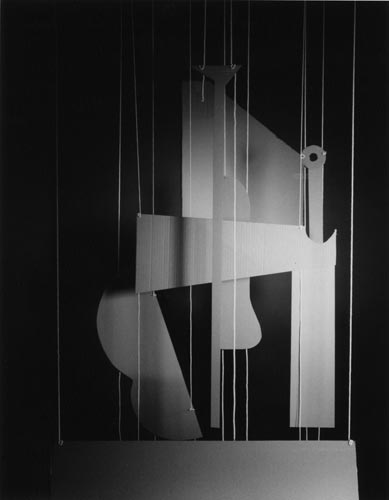
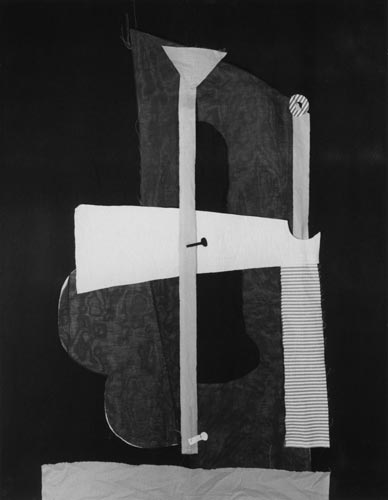
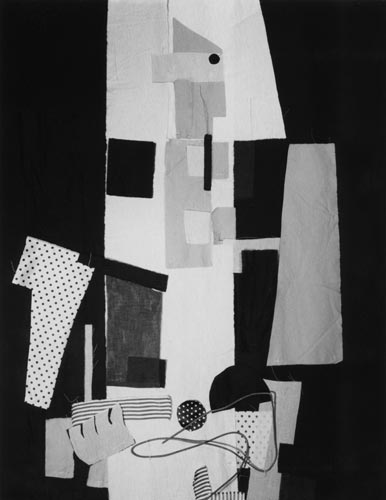
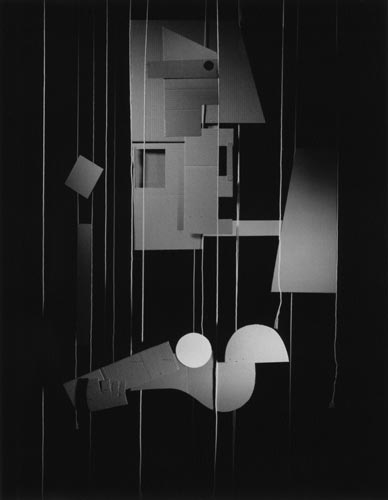

Nastƒôpna wystawa
Copyright ©2010 Galeria FF ≈ÅDK, Remigiusz Biernacki, Grzegorz Przyborek